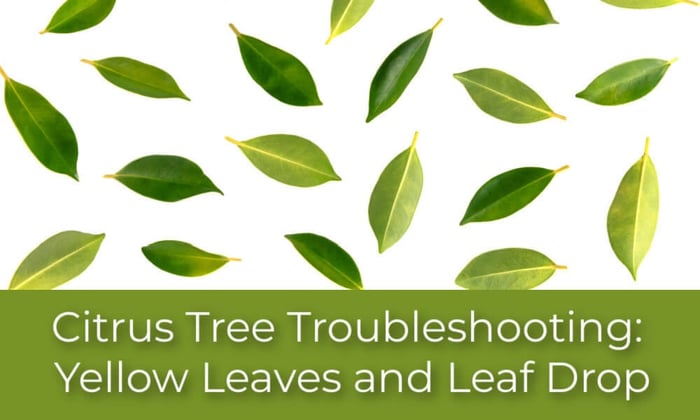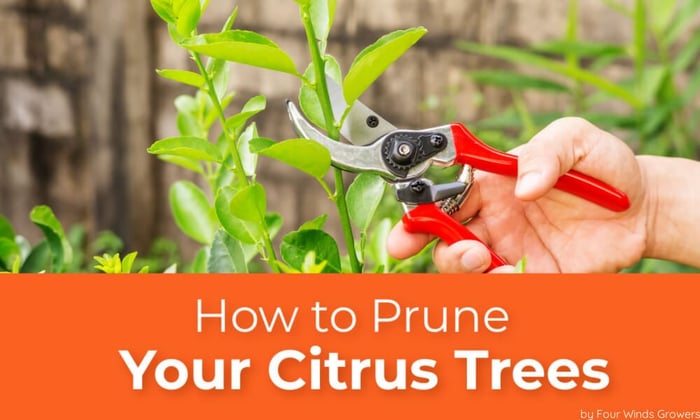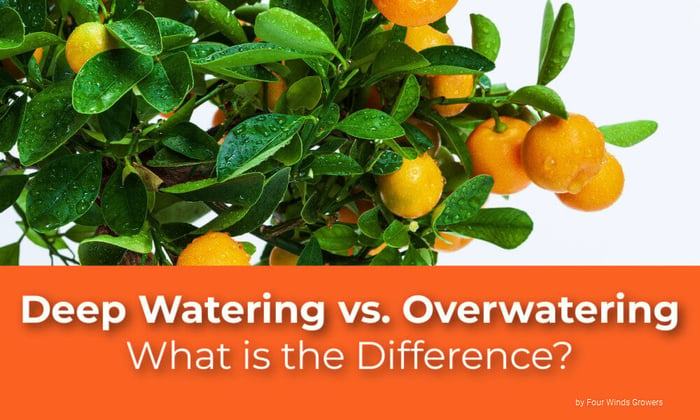Table of Contents
Why Are My Citrus Tree Leaves Turning Yellow and Dropping?
One of the most common questions we see from new citrus tree owners in their first seasons is "Why are my citrus tree leaves turning yellow and dropping?"
Yellow leaves can be your tree's way of telling you that there is something wrong with the balance of water, air, light and nutrients that it needs to be happy. It's gone on strike until you can figure out the situation and make it better. Like Goldilocks, citrus trees like their environment to be just right- not too cold, not too hot, not too wet, not too dry and definitely not too buggy!
In return for it's somewhat demading nature, it rewards us with intoxicating blossoms and delicious fruit. Is it a fair deal? That's only for you to answer. After years of growing citrus myself, I say there's no question that citrus growing is the most rewarding experience that I have in my garden. And the longer I do it, the easier it seems to diagnose the issue and fix it quickly.
Here is a brief explanation that will hopefully help you have a better understanding of why citrus tree leaves sometimes turn yellow and drop.
First, let's get this out of the way- the most obvious reason your citrus tree leaves may turn yellow and drop is because they are old and depleted. Like all living things, leaves have a life span. While citrus trees are classified as evergreen, there is a regular life span to citrus tree leaves that lasts anywhere from 12 to 18 months with some lasting as long as 4 years on a healthy tree before they shed. An older leaf will be thicker usually more weathered looking.
Since most citrus trees "leaf out", or produce new leaves, in the spring and fall seasons, it is expected that you will see a large amount of leaf drop during this time as well.
During this time of year, old citrus tree leaves will go yellow as the tree pulls out as many nutrients as possible to reuse elsewhere in the tree in preparation for leaf drop. During this time, you should also see new growth come in to replace the last season's growth. This new growth will shade outgrowth from the previous seasons and cause older leaves from within the canopy to drop as well. In short, some leaf drop is normal and you should see it nearly year-round with most dropping in spring/fall.
Abnormal leaf drop can be caused by several factors including:
- Exposure to extreme changes in temperature
- Lack of water, not watering often or deeply enough
- Over watering, which is watering too often
- Lack of nutrients or nutrients imbalance
- Root disease
- Pests, including insects and rodents
- Wind
- Damage from spraying
Solutions:
Exposure to extreme changes in temperature :
Analyze your situation. If you are taking your tree out of the box for the first time or moving the tree to a new location, then you can expect some amount of leaf loss as your tree acclimates to its new home. The ideal temperature range for citrus trees is between 32°F & 85°F. Protect your tree from sudden changes in weather.
Click here to read: How to Acclimate Your New Citrus Tree
If you live in an area that regularly drops below 32°F for more than a few hours in the winter, consider growing your tree in a container so that it can be moved inside and by a sunny window during winter. Cold temperatures can also cause citrus foliage to turn yellow in color.
Click here to read: Growing Citrus in Containers
While citrus trees can tolerate much higher temperatures, they are naturally understory trees in the forests that they are native to, so direct sun in combination with temps above 85°F can cause sunburn & defoliation. Protect your tree from intense sunlight exposure when temperatures are above 85°F with some kind of shade cloth or tree paint & foliar spray.
Too much or too little water:
If your tree is overall yellow in color, it could be due to too much or not enough water. Water on a regular schedule according to how often the soil dries out. Notice how long it takes from the time you water until the top 2" of you soil dries out. It could be every 2 weeks, every week or even more often depending on the climate and your pot size.
Click here to read: Deep Watering vs. Overwatering: What is the Difference?
Lack of nutrients or nutrient imbalance:
If you have not fertilized recently or on a regular basis, a nutrient imbalance or deficiency could be why your leaves are turning yellow. If you are not already feeding your tree regularly, apply a monthly dose of citrus fertilizer like Romeo Plant food.
Pests, including insects and rodents:
Most insects can be treated easily if you use insecticidal soap or a regular hosing off. Insects like scale adhere themselves quite well so you may need to spray them then give the infested area a quick wipe down with a rag.
Wind:
When dealing with wind, you have a few choices. You can either move the tree to a protected location or protect your tree with some kind of physical barrier. Make sure that your tree is properly staked, which may require upgrading the tree's current stake with a larger one. If you decide to add a stake, leave a couple of inches of space between your tree's trunk and the stake so that as the tree grows, it does not only rely on the stake for support but can start to support itself on windy days.
We want you to succeed when it comes to growing citrus in containers! If you have any questions about citrus tree growing, don't hesitate to email us at: cs@fourwindsgrowers.com




